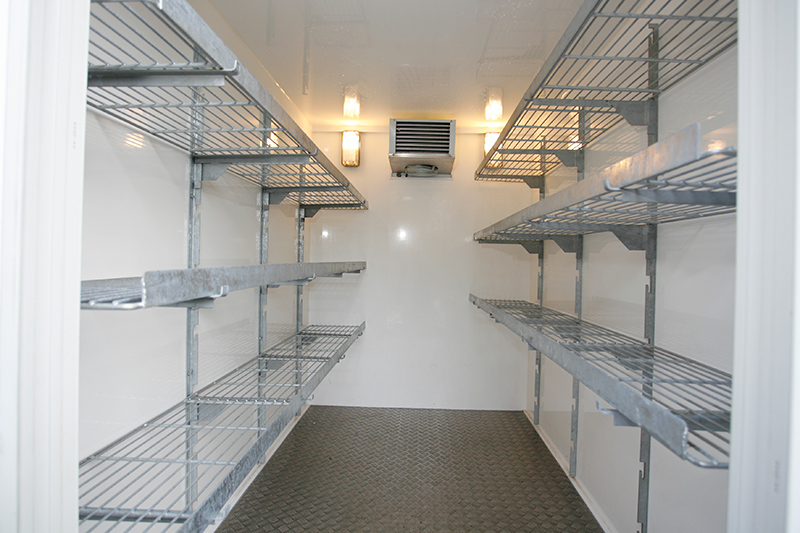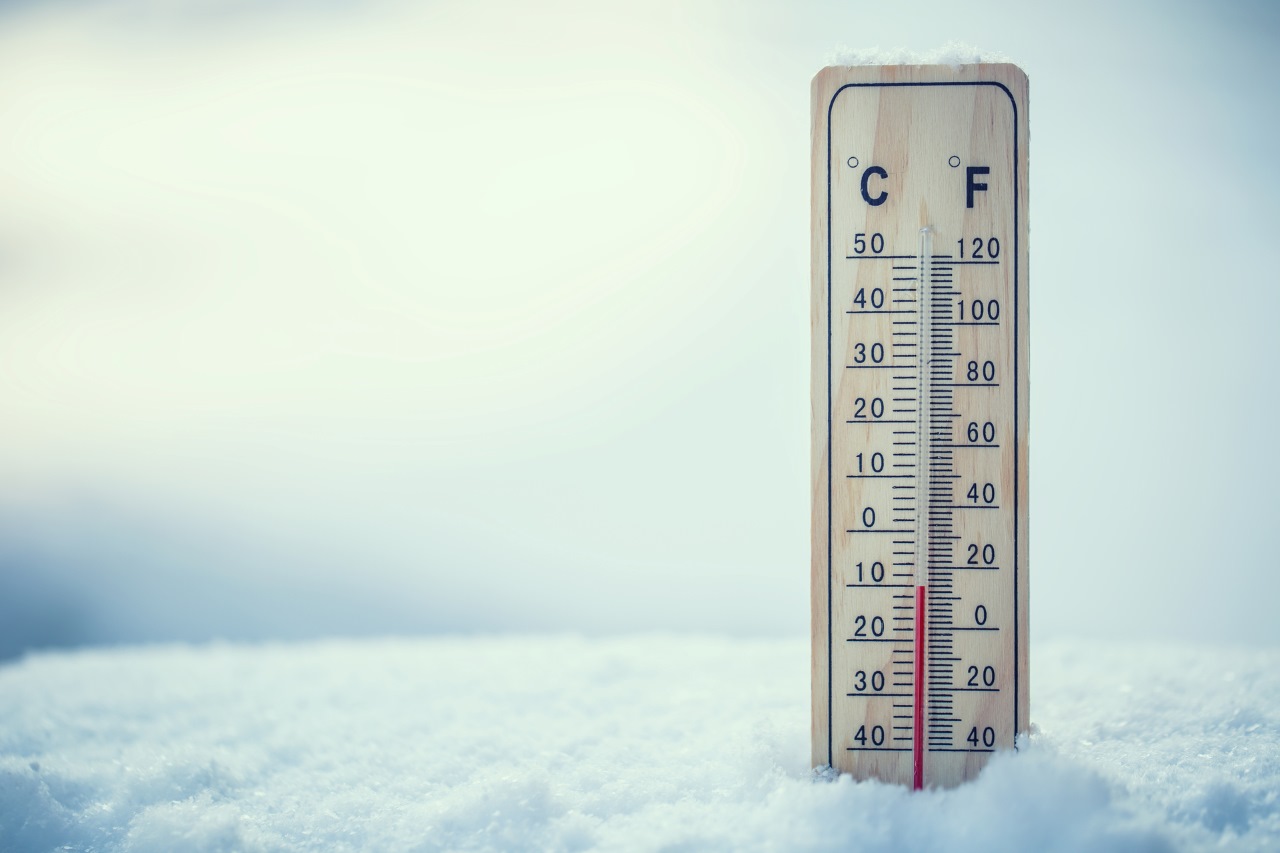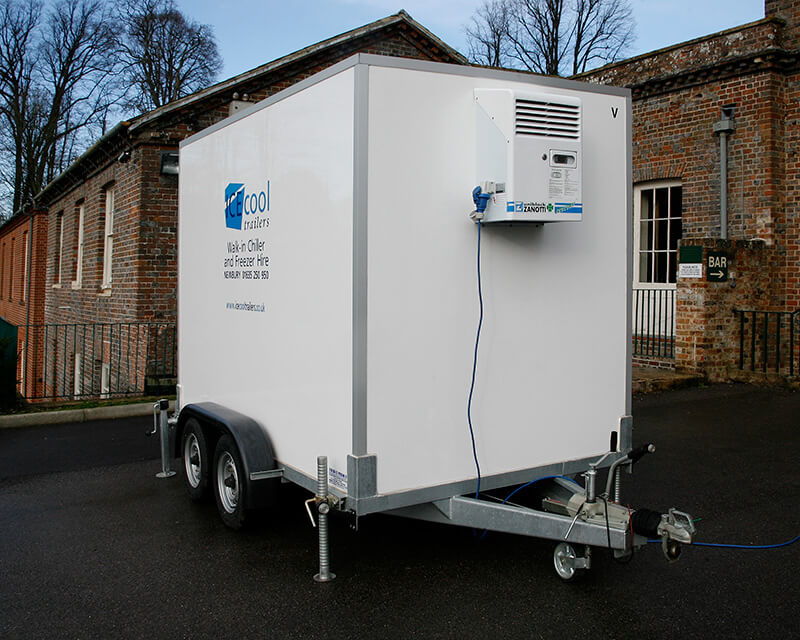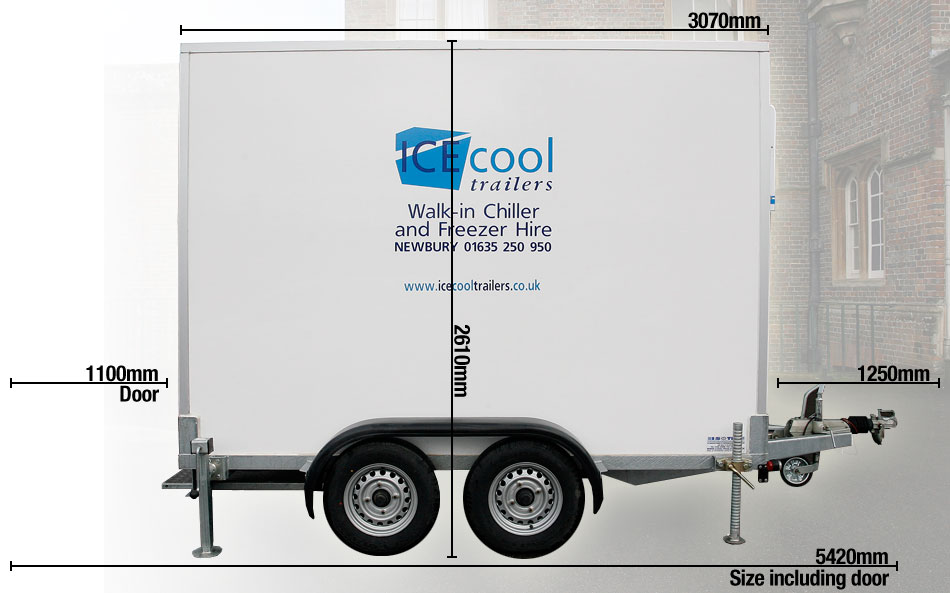Walk-In Freezer: What is it and How Does it Work?

Walk-in freezer hire is one of the services we offer at Icecool Trailers. Our walk-in cold rooms and freezers are available for a number of purposes, including emergency refrigeration/freezing, construction and expansion projects, and temporary cold storage for special events. Nevertheless, that's the business side of things. Have you ever stepped back to consider the science of freezing? Have you ever wondered how and why things freeze?
Most of our discussions regarding freezing are directly related to reducing the temperature of water molecules until they change from a liquid state to a solid. However, it's not just water that can be frozen. Just about any substance can reach a freezing point if temperatures are low enough. The question is, why? Understanding the science behind freezing helps us to better serve our customers.
What is a Walk-In Freezer?
A walk-in freezer is a large, insulated storage room designed to keep perishable items at sub-zero temperatures. These freezers are commonly used in commercial settings such as restaurants, grocery stores, and food production facilities. Unlike standard freezers, walk-in freezers offer significant storage space, making them ideal for storing large quantities of food and other perishable goods.
The Science Behind Walk-In Freezers
Freezing is a process that involves lowering the temperature of water molecules in food to a point where they solidify into ice. This process is crucial for preserving food because it halts bacterial growth and slows down enzymatic reactions that cause spoilage. The science behind walk-in freezers revolves around the refrigeration cycle, which involves key components like the refrigerant, evaporator, condenser, and compressor.
The refrigeration cycle begins with the evaporator coils inside the freezer. The refrigerant absorbs heat from the interior air, causing it to evaporate and turn into a gas. This gas is then compressed, raising its temperature and pressure. Next, the hot, high-pressure gas moves to the condenser coils outside the freezer, where it releases its heat and condenses back into a liquid. Finally, the high-pressure liquid refrigerant passes through an expansion valve, dropping in pressure and temperature before returning to the evaporator coils to start the cycle again.
How Do Walk-In Freezers Work?

Walk-in freezers operate by continuously cycling refrigerant through the system to maintain a consistently low temperature. The refrigeration cycle ensures that the heat inside the freezer is absorbed and expelled, keeping the interior cold and suitable for storing perishable items. The insulation of the walls, floor, and ceiling plays a crucial role in maintaining these low temperatures by minimising heat transfer from the outside environment.
Key Features of Walk-In Freezers
Walk-in freezers are equipped with several features designed to enhance their efficiency and functionality. High-quality insulation is essential to prevent temperature fluctuations and reduce energy consumption. The refrigeration system, including compressors and evaporators, is designed for durability and long-term performance. Airtight door seals minimise air leakage, maintaining energy efficiency and ensuring that the interior temperature remains stable. Advanced temperature control systems allow for precise monitoring and adjustment of the freezer's internal environment.
Types of Walk-In Freezers
Walk-in freezers come in various types to meet different needs. Modular walk-in freezers consist of prefabricated insulated panels that can be easily assembled on-site, offering flexibility in size and configuration. Custom-built walk-in freezers, on the other hand, are tailored to specific dimensions and requirements, making them ideal for businesses with unique storage needs or space constraints.
Additionally, if you want to explore more options for cold storage, learn about the difference between walk-in cold rooms and walk-in freezers.
Maintenance and Safety Tips
Regular maintenance is key for the longevity and efficiency of walk-in freezers. Conduct routine inspections to check for wear and tear, especially on door seals and insulation. Keeping the interior and exterior clean prevents contamination and ensures efficient operation. Regularly check and record the internal temperature to ensure it remains within the desired range, and address any fluctuations promptly. Schedule regular maintenance with a professional technician to service the refrigeration system and ensure all components are functioning correctly.
Benefits of Using Walk-In Freezers
Walk-in freezers offer numerous benefits, making them an essential asset for many businesses. By maintaining sub-zero temperatures, walk-in freezers significantly extend the shelf life of perishable goods, reducing waste and saving money. The spacious interior allows for bulk storage, which is particularly beneficial for businesses that need to store large quantities of products. Despite the initial investment, walk-in freezers lead to long-term savings by reducing the frequency of restocking and minimising food spoilage.
Final Thoughts
Walk-in freezers are indispensable for businesses requiring large-scale cold storage. Their ability to maintain consistent low temperatures and spacious design makes them ideal for preserving a wide range of perishable items. If you need to rent a walk-in freezer in the UK, we at Icecool Trailers offer reliable and high-quality solutions for every need.



